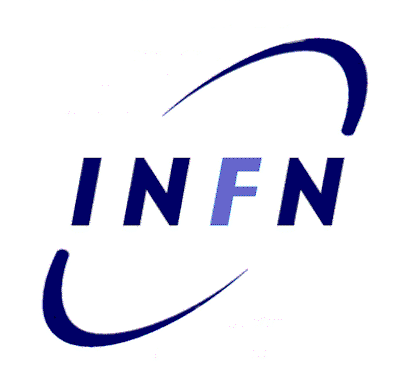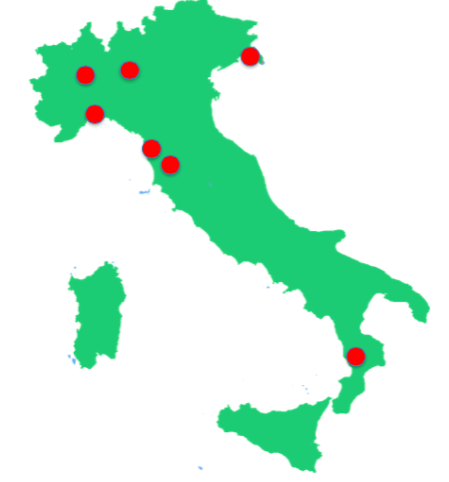Scientific activities of the various Research Units
The specific research projects are listed hereafter together with the team collaborations
that will develop them.
- (TS, PI, FI): Detailed studies of quantum integrable dynamics after the quench, with the determination of Generalized Gibbs Ensembles and correlation functions. We will also use techniques borrowed by random matrix theory and non-perturbative methods of exactly solvable models. We plan to complete the analysis of models like the Sine and Sinh-Gordon models, and the non-relativistic Lieb-Liniger model in its attractive or repulsive regime. We shall also compare quantum field theories at large occupation numbers with the corresponding classical field theories, and study quantum quenches in higher dimensional field theory.
- (TS, CS, FI): Out-of-equilibrium dynamics in one-dimensional fermionic systems. We plan to analyze transport properties at a junction between a topological superconductor and more than one interacting spinless quantum wires (Luttinger liquids). We shall study the stable phases in which Majorana fermions emerge at the contact. We also plan to analyze impurity problems for trapped fermion gases and their out-ofequilibrium quantum thermodynamics, due to the switching of the impurity at a finite temperature.
- (TS, CS, FI): Use of quantum spin chains and their soliton excitations for faithful transmission of quantum information. We shall compute the concurrence and onetangle via quantum Monte Carlo simulations and exact analytical results. We shall analyze the dynamics for entanglement transfer through quantum systems.
- (CS, FI) The study of out of equilibrium properties of spin systems, in particular in connection with the decoherence dynamics of simple quantum objects coupled to spin environment.
- (MI, PI, TS) Analysis of the Abelian Sandpile Model, whose dynamics shows sudden bursts of activity, the avalanches in the sandpile, which eventually drive the system into an out-of-equilibrium steady state. Many exact results and connections with statistical mechanics models and conformal field theories have been already revealed and we expect to identify others.
- (GE, CS) The study of thermoelectric transport properties of strongly correlated systems using holographic methods. The momentum dissipation in the conformal theory can be implemented by breaking diffeomorphism invariance in the dual gravitational theory. The main goal is to find a model with the expected thermodynamics and transport properties for the strange metal phase of High T_c superconductors.
Statistical properties of quantum field theories out of equilibrium.
- (TS, PI): Entanglement entropies in exactly solvable models. Study of entanglement entropies and entanglement spectrum, via Corner Transfer Matrix analytic techniques in integrable models and by numerical methods.
- (TS, PI) Entanglement measures in two dimensional conformal field theories. We shall compute the entanglement entropies for subsystems made of several disjoint parts, the entanglement negativity and its behavior at finite temperature and volume, and other quantities such as the entanglement of formation and the squashed entanglement.
- (TS, FI, CS) Study of the entanglement spectrum. We shall investigate and characterize topological states, such as quantum Hall states, Chern insulators and topological insulators, by means of their entanglement spectra, that are obtained via optimized numerical methods for large systems.
Entanglement in quantum extended systems.
- (TS, FI, GE, PI): Effective theories of topological states of matter. We shall study the edge excitations of topological BF theories in 2 and 3 space dimensions: their stability, the nature of helical fermionic excitations and the classification of universality classes provided by anomalies. We shall also study other topological gauge theories that can describe interacting systems in 3 space dimensions.
- (TS, FI): Quantum Hall states in ultracold atomic systems. We will explore the dynamical deformation of the rotating gas from a ring-shaped to a harmonic trapping potential, thus allowing the study of the transition between the Tonks-Girardeau regime in rotating rings and the fractional quantum-Hall regime. We shall also analyze fermionic gases under non-Abelian gauge potentials and realizable scenarios for the simulation of the Spin Hall effect.
- (TS, PI): Non-relativistic field theory applications to cold-atoms. This is a promising route to solve cold atom systems with dipolar and long range interactions. Moreover we are working on the theoretical proposal to implement gauge field dynamics and (3+1) Dirac fermions by using appropriate settings of cold atom systems.
- (GE, FI) We shall study possible phase transitions in topological superconductors and the related discontinuities in the Josephson current-phase relation. Such discontinuities can be experimentally revealed by a characteristic temperature dependence of the current.
Topological phases of matter in two and three dimensions.
- (FI, TO, GE, TS) Study of 3d universality classes through conformal bootstrap and duality properties of quantum field theories in different dimensions. The recently revived conformal bootstrap for 4-point functions will be implemented numerically and analytically. In particular, we plan to develop an approximate expansion in d=2+epsilon.
- (GE, PI, TO) Study of correlation functions near a critical point. The knowledge of the dimensions and OPE coefficients of the most relevant operators of O(N) models in 3d gives the opportunity to study the two point correlation functions of the magnetization and energy operators off-criticality. Part of this program has already been realized for the Ising model.
- (MI, PI) Study of the Euclidean Matching Problem, a particular combinatorial optimization problem traditionally considered in computer science and mathematics. Ideas and methods that have been developed in the context of statistical mechanics of systems with frustration and disorder can be effectively applied to this problem. (PI, TS) Finite size study of trapped cold atoms and determination of the equation of state.
Conformal invariance and universality classes.
- (TO, FI, TS) Exploiting the newly-discovered mathematical structure called the Quantum Spectral Curve, we shall study the thermal properties of the 1D fermionic Hubbard model, such as its finite temperature correlation lengths and correlation functions at high temperature.
- (TO, FI) Study of supersymmetric gauge theories in 3D and 4D, the N=4 super-Yang Mills and the N=6 super Chern-Simons, by using integrable model tools.
- (TS, FI, CS, GE) Analysis of the spectrum of Majorana fermions; the effects of Majorana fermions at the endpoints of topological superconductors wires on the transport properties of mesoscopic hybrid rings.
Integrable models and breaking of integrability.
^ Back to Top


